Up today are two offerings from Martin & Weyrich of Paso Robles California. Admittedly, I am a huge fan of the Paso Robles region in general. I find that by and large there are many noteworthy wines of distinction coming out of this area. Not only do many of them stand out stylistically, they are also often available at bargain prices compared to wines of similar quality from say Napa or Sonoma.
Having started in 1981 Martin & Weyrich is amongst the earliest wineries from the area. Their portfolio reads like the United Nations of Wine. Italian and Spanish varietals are a large part of what they do right alongside Bordeaux offerings such as Cabernet Sauvignon. There are precious few U.S. Wineries that even make Tempranillo, let alone a dry Rosé of Tempranillo. That's but one example of their diversity.
The first of their two Cabernet's that I looked at is called "Etrusco." 15% Sangiovese was blended in and it spent 18 months 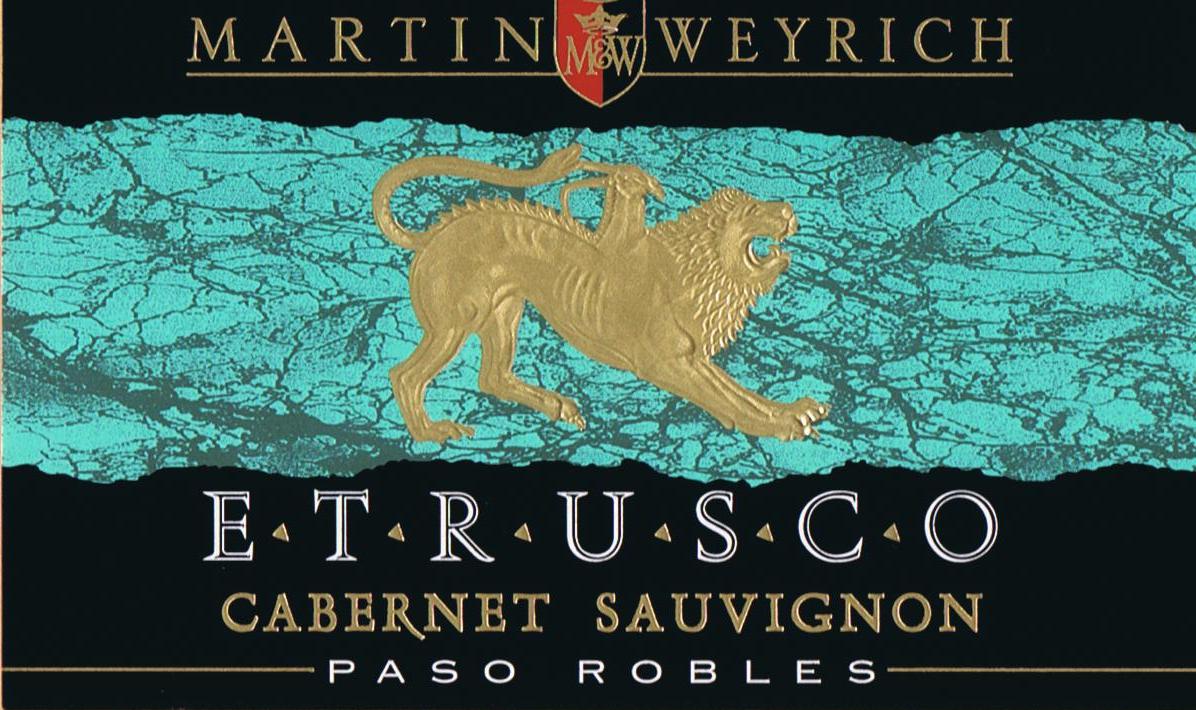 in 50% new French oak. 3,100 cases of this wine were produced and it's retail price is $22. I found this wine to need a solid hour in the decanter to really show all it's true colors. Initially it had some tartness but that dissipated. The nose is full of black raspberry and earthy mushroom aromas. The first sip reveals toasted cherry flavors that follow through to the mid-palate along with substantial pepper and overall spice elements. The finish features some white pepper notes and clings to the back of the throat for a noticeable amount of time. "Etrusco" is well balanced with terrific acidity. It's clear that the Sangiovese blended in really helps balance this wine and make it very approachable. This wine works very well with pasta and red sauce as well as fairly strong cheeses.
in 50% new French oak. 3,100 cases of this wine were produced and it's retail price is $22. I found this wine to need a solid hour in the decanter to really show all it's true colors. Initially it had some tartness but that dissipated. The nose is full of black raspberry and earthy mushroom aromas. The first sip reveals toasted cherry flavors that follow through to the mid-palate along with substantial pepper and overall spice elements. The finish features some white pepper notes and clings to the back of the throat for a noticeable amount of time. "Etrusco" is well balanced with terrific acidity. It's clear that the Sangiovese blended in really helps balance this wine and make it very approachable. This wine works very well with pasta and red sauce as well as fairly strong cheeses.
For $22 this wine is a certainly worth it in my opinion. What I most enjoyed about this wine is it's combination of bright and dark fruit flavors which makes it very easy to drink. That said, this wine has quite a bit going including firm tannins, suggesting a respectable shelf life if stored properly.
The second Martin & Weyrich Cabernet offering is also from 2003. This one is however 100% varietal. Additionally it 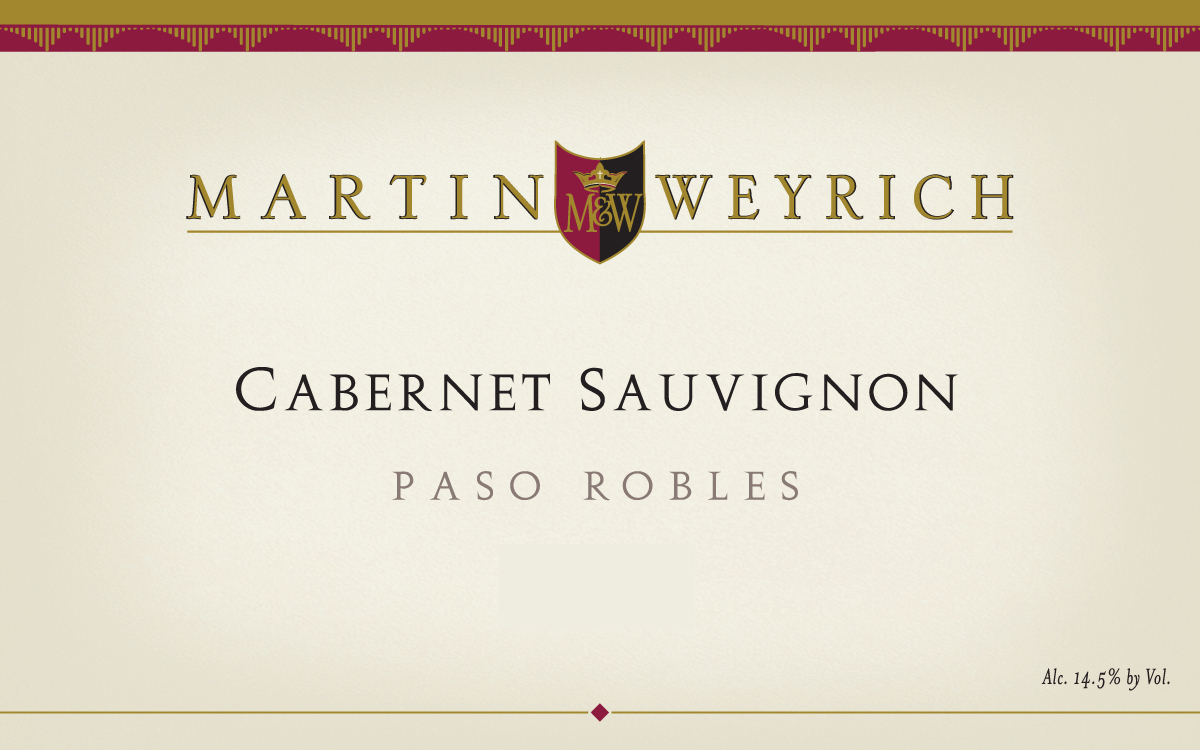 spent two full years in 80% new French oak. Fruit was sourced exclusively at the Weyrich Family Ranch and production was limited to 500 cases. Retail price is $35.
spent two full years in 80% new French oak. Fruit was sourced exclusively at the Weyrich Family Ranch and production was limited to 500 cases. Retail price is $35.
Giving this wine time to breathe is even more essential than with the other selection. The nose offers up chocolate dipped raspberries. The first sip reveals significant tannins, earthiness and kirsch liquor. The mid-palate is big, round and mouth-filling with a ton more cherry fruit and mushroom laced earthiness. The finish is long and lingering with more berry fruit and substantial spice flavors that go on and on. While this wine is quite enjoyable now, especially after sufficient time breathing, it will improve with age, perhaps dramatically. I would anticipate the already present earthiness to become a greater focus as the fruit and tannins soften. The winery expects this wine to age ten years and that would not surprise me. I think that if you tuck a couple away now you'll be pretty happy in 5 or so years when you pull one out for an occasion. At the moment this wine would be a great match for a steak or other equally hearty foods.
At $35 this wine is actually a bargain. No it's probably not a wine most can have with leftovers on Wednesday night very often. But it is a tremendously good wine with excellent aging potential. Cabernet Sauvignon of equal quality from Napa would easily cost twice what this wine does. What I liked most about this wine was it's range of flavors and complexity for the price.
Both Cabernets from Martin & Weyrich impressed me. They are distinct wines and each offers value in it's price category.
Cabernet Sauvignon Week continues with a wine from Joel Gott coming up next.
Please take a moment to vote for my blog.
 literally 2 people, Tara and Rich Minnick. They do just about everything themselves, including hand numbering and hand-waxing every single bottle of their Cabernet Sauvignon. They planted their vineyard in the foothills of the Russian River in 1995. Their 100% varietal, 100% Estate, Cabernet Sauvignon is the only wine they make. Their total annual production is between 300 and 500 Cases. In 2005 they made 359 cases.
The first thing apparent about this wine is that it's a little on the young side right now. Decanting it for a couple of hours is highly recommended if you want to enjoy this one in it's youth.
literally 2 people, Tara and Rich Minnick. They do just about everything themselves, including hand numbering and hand-waxing every single bottle of their Cabernet Sauvignon. They planted their vineyard in the foothills of the Russian River in 1995. Their 100% varietal, 100% Estate, Cabernet Sauvignon is the only wine they make. Their total annual production is between 300 and 500 Cases. In 2005 they made 359 cases.
The first thing apparent about this wine is that it's a little on the young side right now. Decanting it for a couple of hours is highly recommended if you want to enjoy this one in it's youth.

 The nose of the Mohrardt Ridge offers up lots of spice, blueberries and cedar notes. The first sip reveals oak that is firmly present but in check and reserved. The mid-palate features a lot of dark berry fruit along with continued spice notes that tingle along the tongue and back of the throat. The finish, which is substantial in length, has some light earthiness and subtle black pepper. This Wellington Cabernet is very well balanced with good acidity and firm tannins. An hour or so in the decanter does wonders to change the flavor profile of this wine and allow it to open up and shine.
The nose of the Mohrardt Ridge offers up lots of spice, blueberries and cedar notes. The first sip reveals oak that is firmly present but in check and reserved. The mid-palate features a lot of dark berry fruit along with continued spice notes that tingle along the tongue and back of the throat. The finish, which is substantial in length, has some light earthiness and subtle black pepper. This Wellington Cabernet is very well balanced with good acidity and firm tannins. An hour or so in the decanter does wonders to change the flavor profile of this wine and allow it to open up and shine.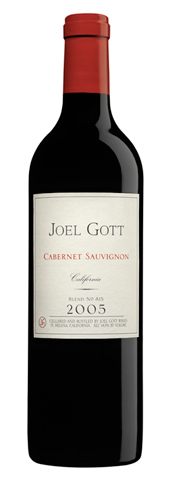 California. Fruit from Napa, Sonoma, Lodi & Lake County went into this wine. It was aged for 15 months in a combination of French and American oak. Just over 9,000 cases of this wine were produced and it retails at $17.
The diversity of fruit really helps make a wine of wide-ranging character and appeal. The first thing apparent is a bouquet of candied black cherries that just explode in your nose. The first couple sips of this wine are tart and tight but it opens up and smooths itself out very quickly. There is an absolute ton of dark, jammy fruit up front that leads to a huge rich mouth-filling mid-palate. The finish features some mocha notes that are underpinned by tingly white pepper. Joel Gott's 2005 California Cabernet is lush and the finish is hefty and substantial. The wine has good acidity and is well balanced. The rich heady fruit makes it very much the New World wine that it is. It has easy drink-ability and sufficient complexity to make it interesting and a bit thought provoking. This wine will pair very well with BBQ and grilled meats in general. It also drinks very well on it's own.
California. Fruit from Napa, Sonoma, Lodi & Lake County went into this wine. It was aged for 15 months in a combination of French and American oak. Just over 9,000 cases of this wine were produced and it retails at $17.
The diversity of fruit really helps make a wine of wide-ranging character and appeal. The first thing apparent is a bouquet of candied black cherries that just explode in your nose. The first couple sips of this wine are tart and tight but it opens up and smooths itself out very quickly. There is an absolute ton of dark, jammy fruit up front that leads to a huge rich mouth-filling mid-palate. The finish features some mocha notes that are underpinned by tingly white pepper. Joel Gott's 2005 California Cabernet is lush and the finish is hefty and substantial. The wine has good acidity and is well balanced. The rich heady fruit makes it very much the New World wine that it is. It has easy drink-ability and sufficient complexity to make it interesting and a bit thought provoking. This wine will pair very well with BBQ and grilled meats in general. It also drinks very well on it's own. in 50% new French oak. 3,100 cases of this wine were produced and it's retail price is $22. I found this wine to need a solid hour in the decanter to really show all it's true colors. Initially it had some tartness but that dissipated. The nose is full of black raspberry and earthy mushroom aromas. The first sip reveals toasted cherry flavors that follow through to the mid-palate along with substantial pepper and overall spice elements. The finish features some white pepper notes and clings to the back of the throat for a noticeable amount of time. "Etrusco" is well balanced with terrific acidity. It's clear that the Sangiovese blended in really helps balance this wine and make it very approachable. This wine works very well with pasta and red sauce as well as fairly strong cheeses.
in 50% new French oak. 3,100 cases of this wine were produced and it's retail price is $22. I found this wine to need a solid hour in the decanter to really show all it's true colors. Initially it had some tartness but that dissipated. The nose is full of black raspberry and earthy mushroom aromas. The first sip reveals toasted cherry flavors that follow through to the mid-palate along with substantial pepper and overall spice elements. The finish features some white pepper notes and clings to the back of the throat for a noticeable amount of time. "Etrusco" is well balanced with terrific acidity. It's clear that the Sangiovese blended in really helps balance this wine and make it very approachable. This wine works very well with pasta and red sauce as well as fairly strong cheeses. spent two full years in 80% new French oak. Fruit was sourced exclusively at the Weyrich Family Ranch and production was limited to 500 cases. Retail price is $35.
spent two full years in 80% new French oak. Fruit was sourced exclusively at the Weyrich Family Ranch and production was limited to 500 cases. Retail price is $35. Today's selection is the final Cabernet for the week in the value category. The Castillo de Molina Cabernet is from Curico Valley. This is estate fruit grown in
Today's selection is the final Cabernet for the week in the value category. The Castillo de Molina Cabernet is from Curico Valley. This is estate fruit grown in 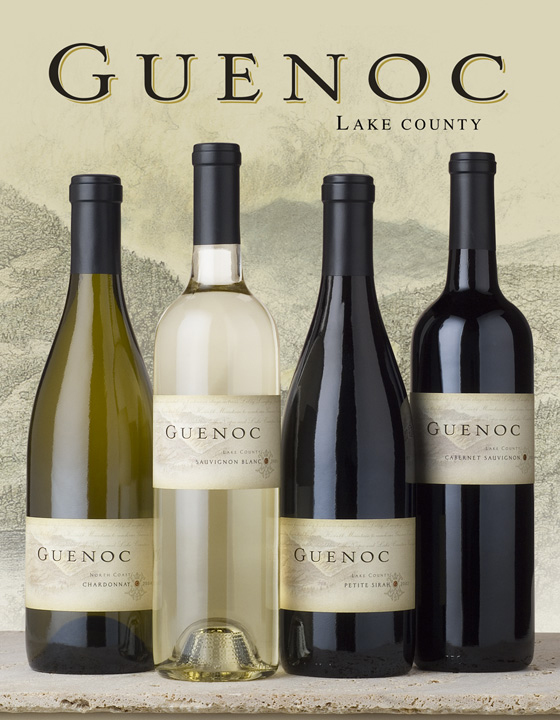 is a sub label of
is a sub label of  some terrific values for my money with wines coming from South America. And Maipo Valley, where this selection hails from, has been a specific source of some of my favorite Chilean finds over time. In general I have often been able to find Chilean wines with a great earthiness to them, which is appealing to me.
The 2005 Santa Rita Cabernet Sauvignon was aged in a combination of American oak and stainless steal vats for 8 months. This one is 100% Cabernet Sauvignon. The nose features mostly black fruit characteristics along with subtler anise and a bit of clove. The first sip out of the bottle was tart and tight. The mid-palate has some dust and earth on it along with dark berry and soft tannins. Even after breathing the finish showed some tartness along with a few white pepper notes. That finish however is well below average in length. After the bottle is open for an hour or so and the initial tartness dissipates as do most of the other limited flavor notes this wine features. In fact, what little fruit it has seems to disappear rather quickly and be replaced by an unfortunate vegetal quality that isn't appealing.
some terrific values for my money with wines coming from South America. And Maipo Valley, where this selection hails from, has been a specific source of some of my favorite Chilean finds over time. In general I have often been able to find Chilean wines with a great earthiness to them, which is appealing to me.
The 2005 Santa Rita Cabernet Sauvignon was aged in a combination of American oak and stainless steal vats for 8 months. This one is 100% Cabernet Sauvignon. The nose features mostly black fruit characteristics along with subtler anise and a bit of clove. The first sip out of the bottle was tart and tight. The mid-palate has some dust and earth on it along with dark berry and soft tannins. Even after breathing the finish showed some tartness along with a few white pepper notes. That finish however is well below average in length. After the bottle is open for an hour or so and the initial tartness dissipates as do most of the other limited flavor notes this wine features. In fact, what little fruit it has seems to disappear rather quickly and be replaced by an unfortunate vegetal quality that isn't appealing. list of wines scheduled for coverage include (not necessarily in this order):
Santa Rita - A Chilean Wine in the value category.
list of wines scheduled for coverage include (not necessarily in this order):
Santa Rita - A Chilean Wine in the value category. As with the previous three it was produced from fruit sourced in Ribera Del Duero. Hemar's older vineyards at 80 years old are also at an average elevation of 2,730 feet and the soil is quite stony in nature.
The 2005 Hemar Crianza spent 13 months in French oak followed by 9 months in bottle before it was released. As with the other wines I tasted in the Hemar line the Crianza straddles the line of New World fruitiness and Old World Elegance. This wine needs about 30 minutes of breathing time before it's fully ready to come out and play. Once it has had that time though it reveals itself nicely. The nose gives of an earthy mushroom muskiness that puts me in the mind of Burgundian Pinot Noir. The mid-palate is an absolute buffet of dark berry fruit with underlying notes of vanilla and a hint of clove. Hints of subtle dark chocolate hit the back of the throat and tease it with their richness. Hemar Crianza is somewhere between medium and full bodied. It's incredibly rich and full in the mouth but doesn't overwhelm. The finish is long, lingering and well above average. More of the earthiness that was apparent in the nose as well as some peppery notes come out in the finish. The acidity and balance of this wine are perfectly in check. This wine will go well with an assortment of grilled meats and other fairly hearty fare.
As with the previous three it was produced from fruit sourced in Ribera Del Duero. Hemar's older vineyards at 80 years old are also at an average elevation of 2,730 feet and the soil is quite stony in nature.
The 2005 Hemar Crianza spent 13 months in French oak followed by 9 months in bottle before it was released. As with the other wines I tasted in the Hemar line the Crianza straddles the line of New World fruitiness and Old World Elegance. This wine needs about 30 minutes of breathing time before it's fully ready to come out and play. Once it has had that time though it reveals itself nicely. The nose gives of an earthy mushroom muskiness that puts me in the mind of Burgundian Pinot Noir. The mid-palate is an absolute buffet of dark berry fruit with underlying notes of vanilla and a hint of clove. Hints of subtle dark chocolate hit the back of the throat and tease it with their richness. Hemar Crianza is somewhere between medium and full bodied. It's incredibly rich and full in the mouth but doesn't overwhelm. The finish is long, lingering and well above average. More of the earthiness that was apparent in the nose as well as some peppery notes come out in the finish. The acidity and balance of this wine are perfectly in check. This wine will go well with an assortment of grilled meats and other fairly hearty fare. Rioja region. The Barón de Ley 2001 Reserva was aged for 20 months in new American oak. After that it spent a full 24 months aging in bottle.
This first thing the nose of this wine gave off was a strong whiff of menthol. I didn't find that very pleasant but it was also accompanied by some subtle cherry. The initial sip was very tart. This wine needs to be decanted for at least an hour. Once that hour passes the menthol notes dissipate and the cherry come out front and center. Accompanying the sour cherry notes, which are fairly typical of Rioja, is plenty of out front oak. As time goes on the oak fades from the forefront. The mid-plate features more cherry accompanied by some vanilla and spice notes. The wine has tremendous acidity. Not so much that it's distracting but it is ever-present and should be considered when looking for a dish to pair this wine with. The finish brings out some white pepper and a touch of earthiness. However for a wine that retails at around $22 the finish is below average in length and frankly unimpressive. Overall the wine doesn't have nearly enough complexity to justify it's price tag.
Rioja region. The Barón de Ley 2001 Reserva was aged for 20 months in new American oak. After that it spent a full 24 months aging in bottle.
This first thing the nose of this wine gave off was a strong whiff of menthol. I didn't find that very pleasant but it was also accompanied by some subtle cherry. The initial sip was very tart. This wine needs to be decanted for at least an hour. Once that hour passes the menthol notes dissipate and the cherry come out front and center. Accompanying the sour cherry notes, which are fairly typical of Rioja, is plenty of out front oak. As time goes on the oak fades from the forefront. The mid-plate features more cherry accompanied by some vanilla and spice notes. The wine has tremendous acidity. Not so much that it's distracting but it is ever-present and should be considered when looking for a dish to pair this wine with. The finish brings out some white pepper and a touch of earthiness. However for a wine that retails at around $22 the finish is below average in length and frankly unimpressive. Overall the wine doesn't have nearly enough complexity to justify it's price tag.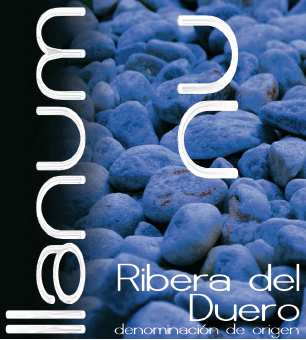 Today's selection is the third of four from
Today's selection is the third of four from  As Spanish Wine weeks extends into it's 6th day I'm taking a look at another wine from
As Spanish Wine weeks extends into it's 6th day I'm taking a look at another wine from  The Rueda area of Spain brings us this fifth wine for Spanish Wine week. As this area is primarily known for white wine it's appropriate that today's selection is just that. Verdejo, Viura and Sauvignon Blanc are the primary white varietals planted in Rueda. Tempranillo, Grenache, Merlot and Cabernet Sauvignon are the red varietals planted there. However the reds take a back seat in Rueda.
The Bodegas Cerresol Palma Real Rueda 2006 is a blend of Verdejo and Viura. The retail on this wine is right around $8-$9. The nose reveals pineapple and subtle hints of guava and peach. The mid-palate features a bevy of citrus notes and more pineapple. The wine is medium bodied and has a round, fairly rich mouth-feel. It has excellent acidity and is well balanced. The finish reveals a touch of tartness along with white peach. The finish is average in length.
The Rueda area of Spain brings us this fifth wine for Spanish Wine week. As this area is primarily known for white wine it's appropriate that today's selection is just that. Verdejo, Viura and Sauvignon Blanc are the primary white varietals planted in Rueda. Tempranillo, Grenache, Merlot and Cabernet Sauvignon are the red varietals planted there. However the reds take a back seat in Rueda.
The Bodegas Cerresol Palma Real Rueda 2006 is a blend of Verdejo and Viura. The retail on this wine is right around $8-$9. The nose reveals pineapple and subtle hints of guava and peach. The mid-palate features a bevy of citrus notes and more pineapple. The wine is medium bodied and has a round, fairly rich mouth-feel. It has excellent acidity and is well balanced. The finish reveals a touch of tartness along with white peach. The finish is average in length. producer I'll be taking at look at over the next several days. The nose of the wine features a huge bouquet of fresh cut strawberries and a touch of candied plum. This wine is young, fresh and tank fermented. Upon opening, this wine reveals itself almost immediately. There are absolutely no harsh or rough edges to this one. The color is a brilliant black cherry hue. The mid-palate features Bing cherry and copious cherry notes. Joven straddles the line between light and medium bodied. The finish reveals just a tiny bit of tartness and tingly white pepper dancing across the tongue.
producer I'll be taking at look at over the next several days. The nose of the wine features a huge bouquet of fresh cut strawberries and a touch of candied plum. This wine is young, fresh and tank fermented. Upon opening, this wine reveals itself almost immediately. There are absolutely no harsh or rough edges to this one. The color is a brilliant black cherry hue. The mid-palate features Bing cherry and copious cherry notes. Joven straddles the line between light and medium bodied. The finish reveals just a tiny bit of tartness and tingly white pepper dancing across the tongue.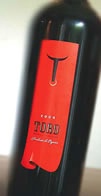 The 2006 Toro is 100% Tempranillo. The first thing off of the nose is a bushel of berries. blackberries and blueberries dominate. A hint of oak and a touch of vanilla sneak into the nose as well. Right out of the bottle the wine is closed up, tight and had a few sharp edges to it. It opens up easily and quickly however, with 20 minutes really doing the trick.
The 2006 Toro is 100% Tempranillo. The first thing off of the nose is a bushel of berries. blackberries and blueberries dominate. A hint of oak and a touch of vanilla sneak into the nose as well. Right out of the bottle the wine is closed up, tight and had a few sharp edges to it. It opens up easily and quickly however, with 20 minutes really doing the trick.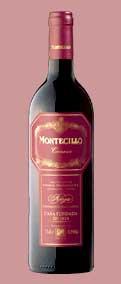 pretty tart and a touch rough around the edges out of the bottle. Decanting for about 45 minutes softens the edges and diminishes the tartness. This wine is light bodied and the mid-palate features sour cherry flavors and white pepper notes. In some ways it's similar in body and flavor characteristics to Chianti in a similar price range. The finish is below average in length, featuring more of the above-mentioned sour cherry notes. Overall it's a fairly one-dimensional wine. Not unpleasant to drink, but not really impressive in any way either.
pretty tart and a touch rough around the edges out of the bottle. Decanting for about 45 minutes softens the edges and diminishes the tartness. This wine is light bodied and the mid-palate features sour cherry flavors and white pepper notes. In some ways it's similar in body and flavor characteristics to Chianti in a similar price range. The finish is below average in length, featuring more of the above-mentioned sour cherry notes. Overall it's a fairly one-dimensional wine. Not unpleasant to drink, but not really impressive in any way either.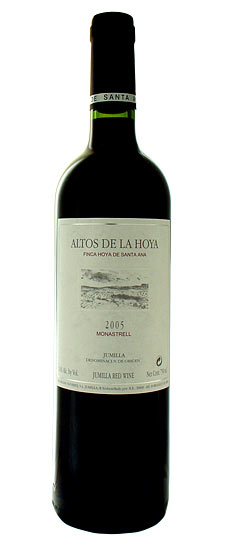 la Hoya is composed of
la Hoya is composed of  City. Hundreds of wines were available to taste from all areas of Australia.
As it has the last few years, this event sold out in advance. This is no surprise since it's been a consistently good and fun event to attend. One would have a hard time getting to half the wine, let alone all of it. My strategy was to taste some whites early in the day and then walk around cherry picking between favorite producers I was already familiar with and unfamiliar ones that sounded interesting.
City. Hundreds of wines were available to taste from all areas of Australia.
As it has the last few years, this event sold out in advance. This is no surprise since it's been a consistently good and fun event to attend. One would have a hard time getting to half the wine, let alone all of it. My strategy was to taste some whites early in the day and then walk around cherry picking between favorite producers I was already familiar with and unfamiliar ones that sounded interesting.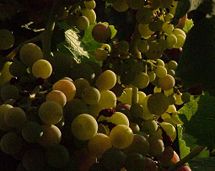 found in Southern Italy, but plantings are cropping up in other parts of the world. Most notably it's being planted in Australia and California.
found in Southern Italy, but plantings are cropping up in other parts of the world. Most notably it's being planted in Australia and California.